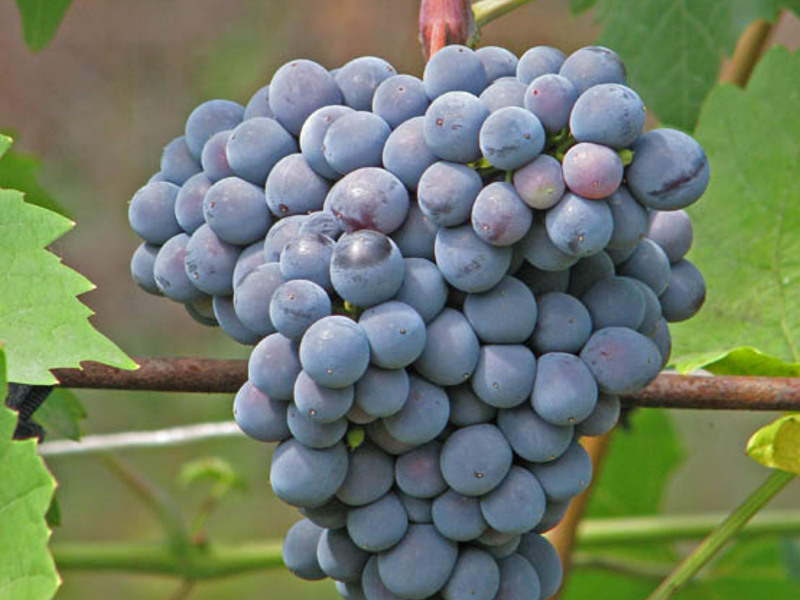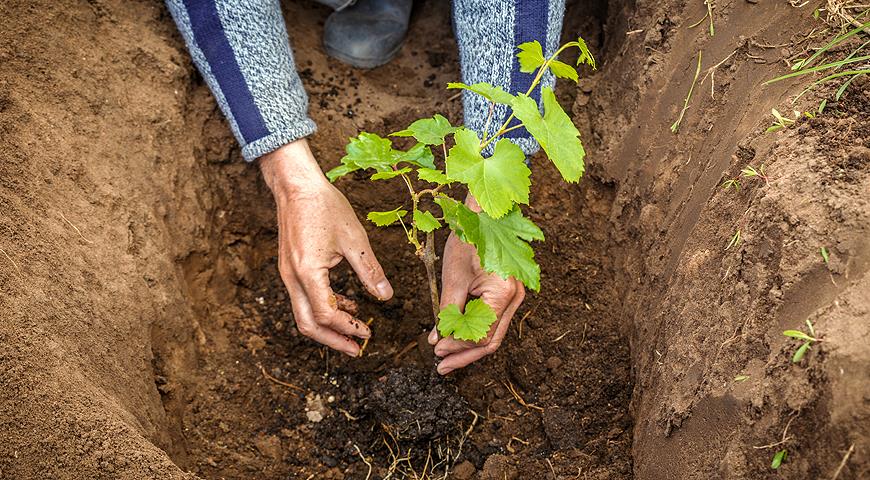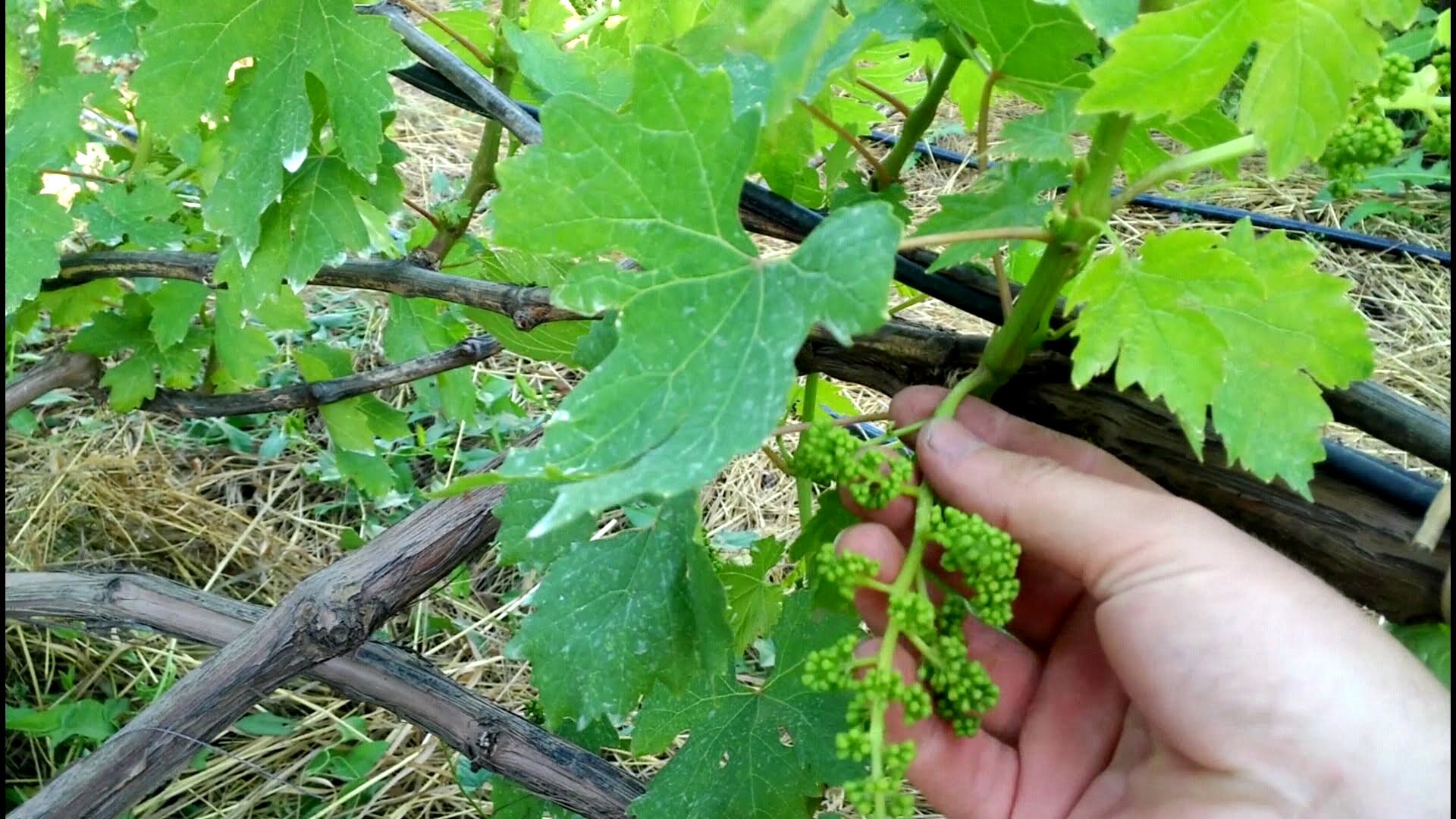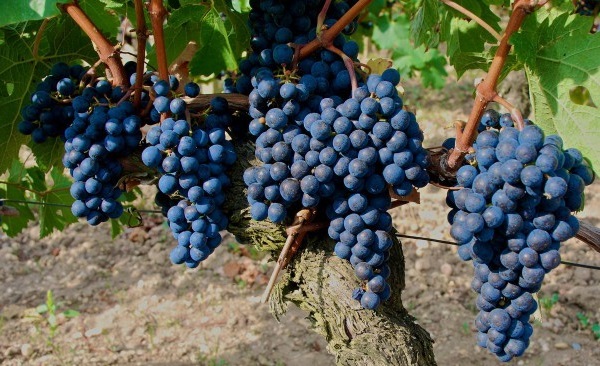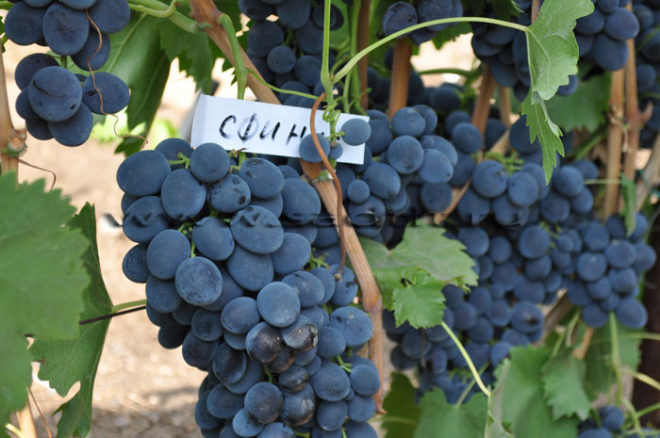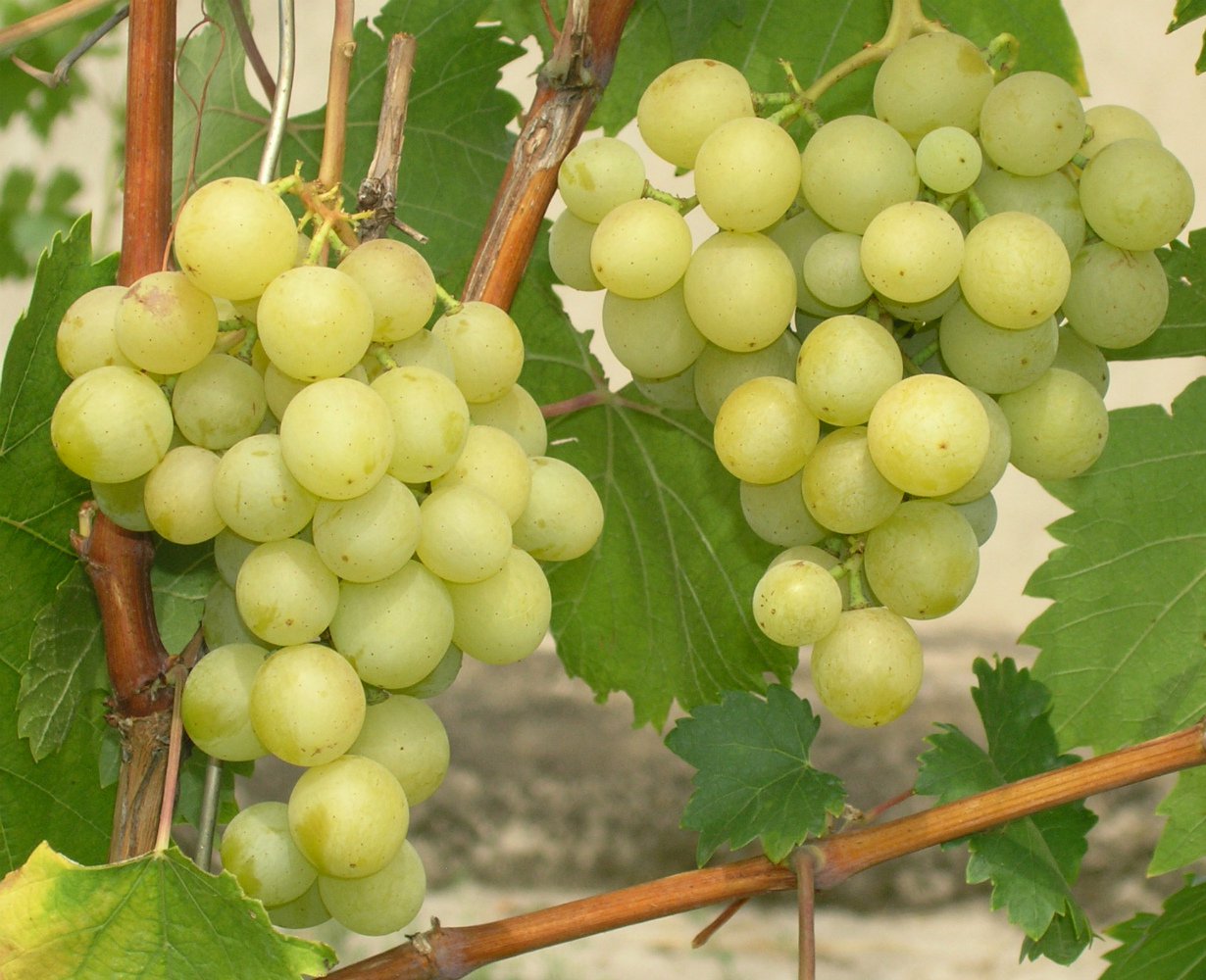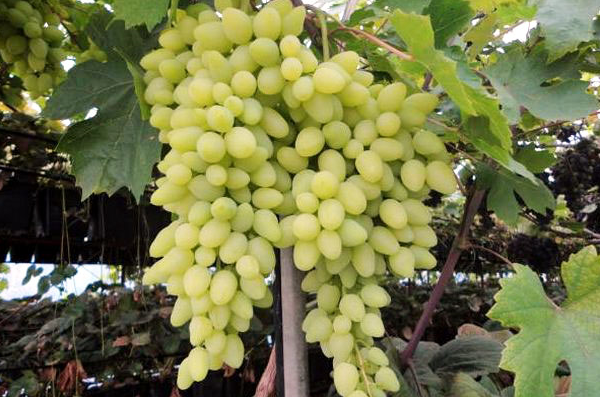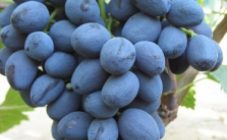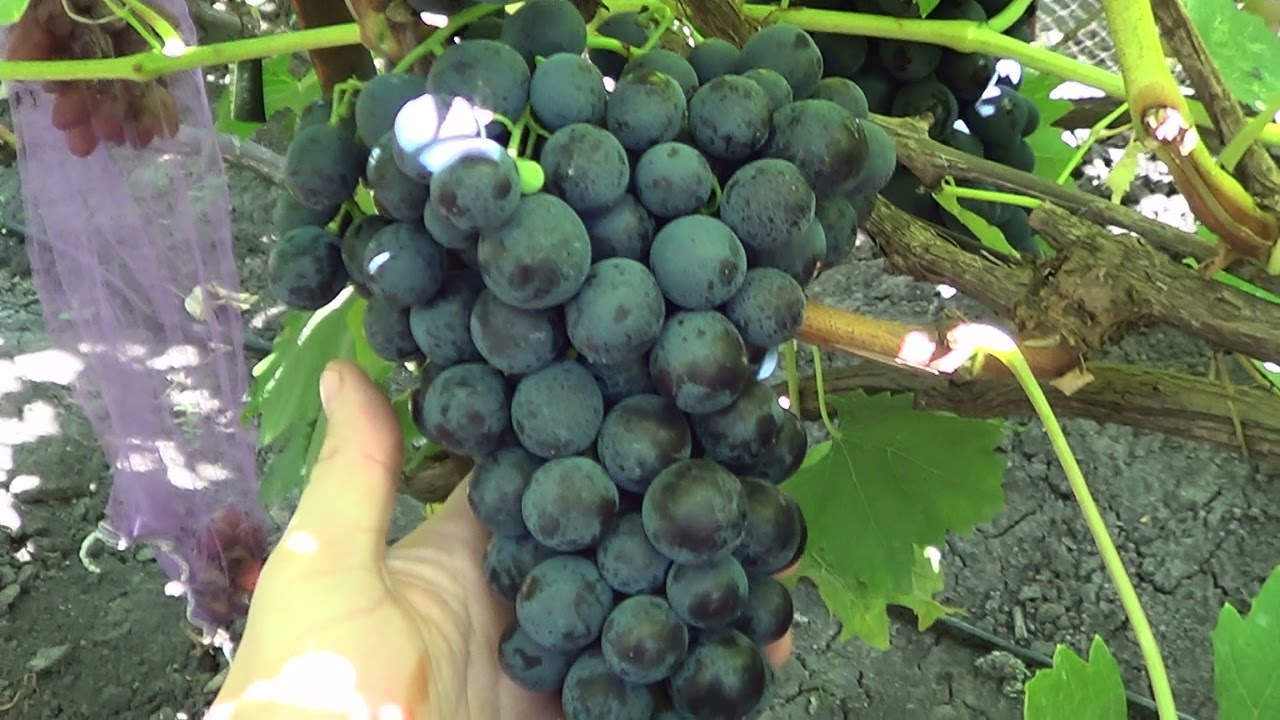Content:
A primordially southern culture, grapes, more and more confidently occupies a solid position in a number of fruit and berry crops grown in the gardens of the Central strip and the Moscow region. In place of technical unpretentious varieties with small and sour berries, there are varieties of table and dessert grapes. This article provides information about the domestic variety: Ilya Muromets grapes.
The Muromets grape was created in the 60s of the last century by crossing the North and Pobeda varieties. The famous scientists Shtin and Filipenko carried out breeding work with plants. Their efforts were crowned with success, a frost-resistant variety was obtained, with an early ripening period and excellent berry taste. Until now, winegrowers of the middle lane willingly grow vinograd of this variety on their plots.
Characteristics of grapes Muromets
Description of the Muromets grape variety should begin with its appearance. This is a powerful spreading plant, a real fabulous hero. The trunk is strong and thick, the shoots are characterized by rapid regrowth, reaching a length of 300 cm.
The foliage is large, has a rounded shape, the division of the leaf plate into blades is poorly expressed. The color of the leaves is light green, the petioles are reddish.
The bunches ripen on the grapes are dense, conical in shape. Their weight reaches 600 g, under favorable conditions you can get bunches weighing 1 kg.
The berries of this variety are quite large, up to 2.5 cm in diameter, and have seeds. The color of the grapes is dark purple, almost black. This variety for table purposes, that is, intended for fresh consumption and processing (raisins, grape juice, wine). The taste of berries is sweet without sugary, there is a pleasant sourness.
One adult bush of Muromets grapes can be harvested in 5 kg.
Site selection for planting
For the vineyard, they traditionally choose sunny areas, protected from strong winds. Often, bushes are located near the walls of buildings on the east or south side. The wall, warming up during the day, radiates warmth in the evening and at night, so necessary for the grapes.
For planting grapes, soils are chosen with a neutral reaction, loose, with a low occurrence of groundwater. Suitable loam and sandy loam, refined by the introduction of sand and humus, fertilized with rotted manure and a complex of mineral fertilizers. The approximate dosage of fertilization before planting a grape seedling per 1 sq. meter:
- rotted manure (horse, mullein) 10 kg;
- wood or grass ash 600 g;
- superphosphate 350 g.
Landing
Grape seedlings are placed in the ground in spring, early May or August. In the prepared area, planting holes are dug, 45–55 cm deep. For the Muromets variety, given the size of the bush, the distance between the holes should be at least one and a half meters.
Immediately, a piece of rubber hose or plastic pipe is allowed into the dug hole so that a part 20 cm long protrudes above the ground. Holes are made at the lower end of the hose.The pipe is necessary for further watering and feeding the grapes, through it moisture can penetrate immediately into the root zone of the plant.
Trellis for grape shoots are installed in advance. The pit is filled with soil mixed with fertilizers. The seedling is placed in the hole so that the graft on the stem remains above ground level.
Care
The cultivation of Muromets grapes has no peculiarities in comparison with the care of other varieties.
- Watering. Abundant watering is necessary for plants during flowering and berry pouring. At this time, if the weather is hot and dry, the moisture rate per bush is 20 liters, twice a week. Water the grapes only with warm water.
- The plant is fed in spring and summer. In April-May, when there is an active growth of greenery on the grapes, the soil around is mulched with rotted manure or compost (a bucket for each bush). At the time of flowering and the formation of bunches, phosphorus-potassium mixtures are introduced every 15 days in dosage, according to the instructions on the package. Grapes respond positively to foliar feeding with microelements (boron and magnesium).
- Pruning is essential for proper plant development. The most common practice is the formation of grapes in two sleeves, which are horizontally attached to the trellis. In the spring, 7-9 buds are left on the sleeves, from which fruiting shoots will grow.
- Normalizing the bunches at the time of pouring will avoid peas. Small bunches of grapes are removed, leaving no more than 15–20 pieces on the bush.
- To prevent the occurrence of gray rot on the plant, the vineyard is sprayed with copper-containing preparations in early summer (before flowering). In the future, they monitor the density of the crown, preventing it from thickening.
- Despite the excellent winter hardiness, it is recommended to cover the Muromets grape bushes for the winter. For this, when the cold weather sets in (at the end of October), the branches of the grapes are removed from the supports and placed on boards or bars laid out on the ground so that the vines do not touch the soil. They are fixed with ropes and staples. From above, the structure is covered with a spanboard or darnite. The main requirement for the shelter of grapes is that it must be breathable.
Harvesting is carried out in dry and sunny weather, carefully cutting off the bunches from the branches with a pruner. You can store the harvest at a temperature of +7 degrees by placing the grapes in cardboard or wooden boxes.
Advantages and disadvantages
Comparison of the characteristics of the Muromets variety with other varieties of table grapes indicates a clear advantage of this variety:
- high winter hardiness (without shelter tolerates frosts down to -25 degrees);
- early maturity (ripens in early August);
- unpretentious care;
- fast growth of shoots;
- resistance to mildew;
- the berries are juicy, the skin is thin and tender, the seeds are small.
Some of the disadvantages of this grape variety cannot be kept silent:
- a tendency to pea when tying a large number of brushes;
- drying of berries in a bunch during drought and cracking in a rainy summer;
- susceptibility to gray rot disease.
The Ilya Muromets grape variety has been grown in the gardens of our country for over 50 years. Its unpretentiousness and high yield makes it possible to recommend the crop for growing to gardeners who are taking their first steps in viticulture.
